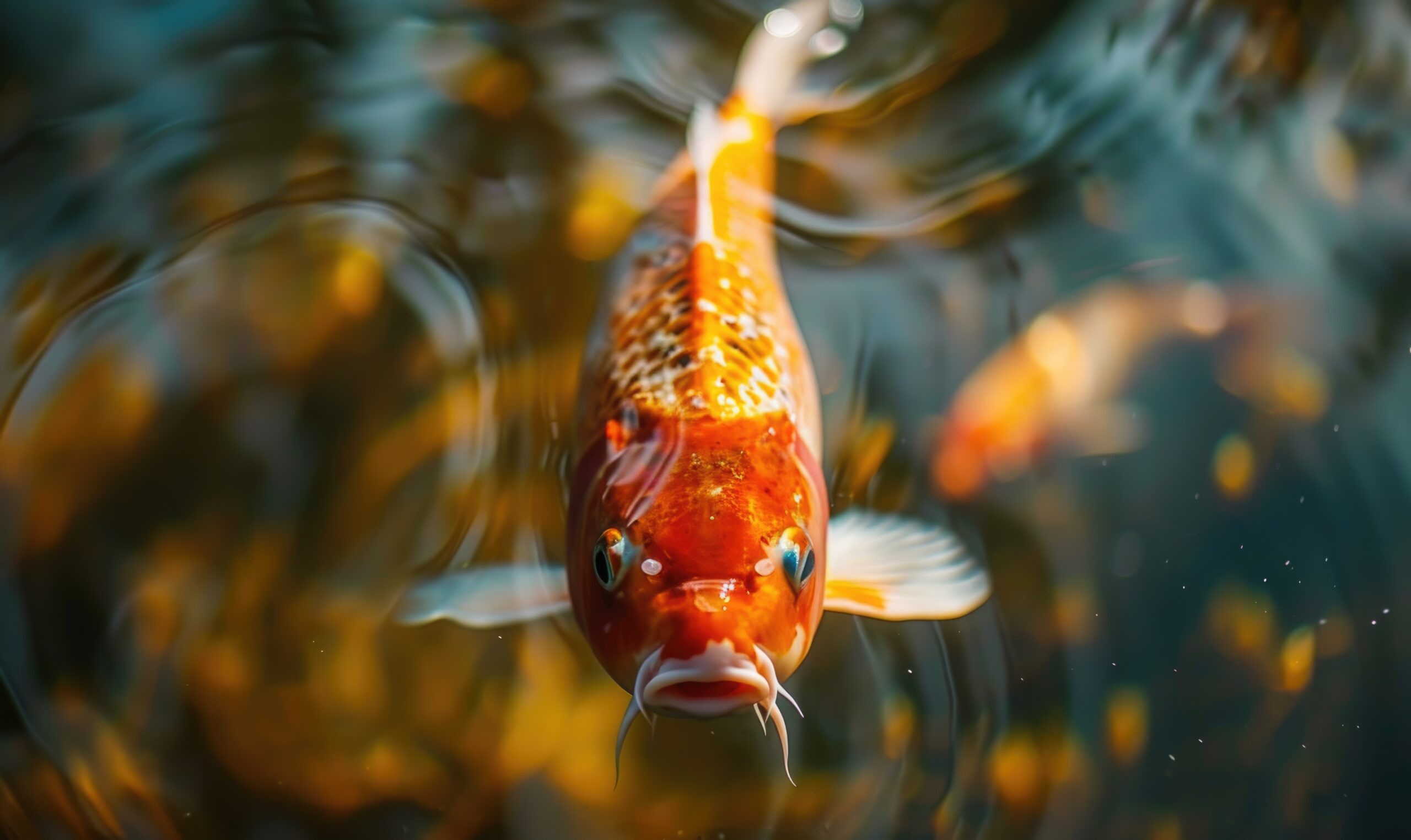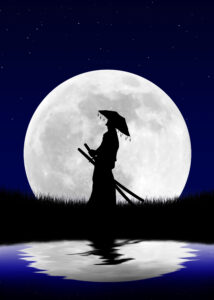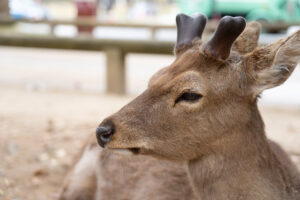===
Koi fish, or Nishikigoi as they are known in Japan, have captivated the hearts of many across the globe. This exquisite variety of domesticated carp is not only an aesthetic marvel but also a cultural icon that embodies deep-rooted traditions, art, and symbolism. As the popularity of koi continues to spread beyond Japan’s shores, a closer examination of Nishikigoi culture reveals a blend of art, nature, and spirituality that resonates with enthusiasts worldwide.
1. The Allure of Koi: A Glimpse into Nishikigoi Culture
The allure of koi is undeniable; their vibrant colors and graceful movements evoke a sense of tranquility and beauty. In Japan, they are more than just ornamental fish; they are a symbol of perseverance and strength, often associated with the legend of koi fish that swim upstream to become dragons. This cultural narrative adds layers to their appreciation, making the act of koi keeping a profound practice intertwined with philosophical significance.
In modern society, the aesthetic appeal of koi has led to an increased interest in their care and breeding. Enthusiasts fill their gardens and ponds with these magnificent creatures, transforming outdoor spaces into serene retreats. The art of koi keeping has evolved into a sophisticated hobby, where enthusiasts meticulously curate environments that foster the health and beauty of their fish.
The visual spectacle of koi has also inspired various forms of art, from traditional Japanese paintings to contemporary digital illustrations. Exhibitions and galleries frequently display works that celebrate the koi’s beauty, thus reinforcing its status as a cultural icon. The engagement with koi transcends mere observation; it invites participation in a rich tapestry of traditions that connect individuals to nature and community.
Moreover, the koi community often organizes events such as exhibitions and competitions, where enthusiasts come together to share knowledge and experiences. These gatherings foster a sense of camaraderie and collective appreciation for Nishikigoi culture, further solidifying the bonds that unite koi lovers around the world.
As more people discover the joys of koi keeping, the culture surrounding Nishikigoi continues to expand. The sharing of stories, experiences, and techniques enriches the community, ensuring that the artistry and beauty of koi are not only preserved but also celebrated in new and innovative ways.
In essence, the allure of koi lies not just in their appearance but also in the intricate web of culture, community, and art that surrounds them. The exploration of Nishikigoi culture serves as a reminder of the beauty found in nature and the bonds it creates among those who appreciate it.
2. Understanding Nishikigoi: History and Significance
The history of Nishikigoi dates back to ancient times when the common carp was first domesticated in Japan. Initially raised for food, these fish were eventually bred for their striking colors and patterns, leading to the development of Nishikigoi as a distinct category of ornamental fish. The evolution of koi breeding in Japan can be traced back to the 19th century, particularly in the Niigata region, where farmers began selectively breeding fish for specific aesthetic traits.
The significance of Nishikigoi extends beyond mere decoration; these fish embody a rich cultural heritage. In Japanese philosophy, koi are often seen as symbols of resilience and determination, capable of overcoming challenges. This belief resonates deeply with those who keep koi, as the act of nurturing these fish mirrors the commitment and care required in personal endeavors.
Throughout history, koi have played a crucial role in Japanese customs and festivals. They are often featured in artwork, poetry, and literature, symbolizing various virtues such as courage, strength, and longevity. The koi’s journey from humble origins to revered status illustrates Japan’s deep connection to nature and the spiritual significance imbued in its flora and fauna.
In addition to their cultural symbolism, koi have also become a means of social interaction. The practice of koi keeping has fostered communities where enthusiasts exchange knowledge, techniques, and experiences. This collaborative spirit reflects the underlying values of harmony and mutual respect that are central to Japanese culture.
As Nishikigoi culture spreads globally, its history and significance continue to evolve. While rooted in Japanese tradition, the appreciation for koi has transcended cultural boundaries, allowing people from diverse backgrounds to connect through a shared passion for these beautiful fish.
Understanding the history and significance of Nishikigoi enriches the experience of koi keeping, transforming it from a simple hobby into a meaningful practice steeped in cultural heritage and personal reflection.
3. The Varieties of Koi: Colors, Patterns, and Traits
The world of Nishikigoi is incredibly diverse, with various koi varieties distinguished by their colors, patterns, and traits. Each type of koi has its unique characteristics, making the selection process an exciting exploration for enthusiasts. The most popular varieties include Kohaku (white with red markings), Taisho Sanke (white with red and black patterns), and Showa Sanke (black with red and white), among others.
Koi enthusiasts often find themselves captivated by the intricate patterns and striking colors that define each variety. The beauty of koi is not solely in their appearance but also in the subtleties of their patterns, which can change and evolve over time. This dynamic quality adds an element of surprise and anticipation for breeders and keepers alike.
The breeding of koi is a delicate art that requires a keen eye for aesthetics and genetics. Breeders select parent fish based on specific traits to produce offspring with desirable characteristics. This careful selection process has resulted in more than 100 recognized varieties, each with its unique appeal and charm. The continuous pursuit of perfection in color and pattern is a hallmark of koi culture, driving advancements in breeding techniques and practices.
Moreover, the appreciation for koi is often linked to the concept of “wabi-sabi,” a Japanese aesthetic that finds beauty in imperfection. This philosophy encourages koi keepers to embrace the uniqueness of each fish, recognizing that variations and flaws can contribute to their charm and individuality.
The vibrant array of koi not only adds visual interest to gardens and ponds but also serves as a conversation starter among enthusiasts. The discussions surrounding colors, patterns, and traits can lead to deeper connections, as keepers share their experiences and insights into their koi’s unique personalities.
In summary, the diversity of koi varieties enriches the Nishikigoi culture, providing endless opportunities for exploration and appreciation. The interplay of colors and patterns reflects the beauty of nature and the artistry of breeding, creating a captivating world that continues to enchant enthusiasts around the globe.
4. Koi Keeping: A Balancing Act of Art and Science
Koi keeping is often described as a harmonious blend of art and science. The aesthetic aspects are evident in the careful design of ponds and gardens, where koi are housed. Enthusiasts often spend considerable time crafting serene outdoor spaces that complement the beauty of their fish, incorporating elements such as rocks, plants, and water features to create a visually appealing environment.
On the scientific side, the health and well-being of koi depend on a robust understanding of aquatic ecosystems. Water quality, temperature, and filtration are critical factors that require constant monitoring. Koi keepers must strike a balance between creating an attractive habitat and maintaining optimal conditions for their fish to thrive.
The nutritional needs of koi are another aspect where science plays a significant role. A balanced diet is crucial for maintaining the health and coloration of koi. Enthusiasts often experiment with various types of food, including pellets, vegetables, and even live foods, to determine the best diet for their fish. This component of koi keeping highlights the importance of informed decision-making based on both artful presentation and scientific principles.
Moreover, the act of observing koi can be a meditative experience, connecting the keeper to the natural world. The graceful movements of the fish and the tranquil setting create an atmosphere conducive to relaxation and reflection. This relationship emphasizes the emotional and spiritual aspects of koi keeping, elevating it from a mere hobby to a holistic practice.
As technology advances, new tools and resources are emerging to assist koi keepers in their endeavors. Water testing kits, pond filtration systems, and automated feeders provide invaluable support, allowing enthusiasts to enhance their koi-keeping practices with greater precision and efficiency.
In conclusion, koi keeping is a unique pursuit that intertwines artistry and scientific knowledge. This balancing act fosters a deep appreciation for both the beauty of koi and the intricacies of their care, allowing enthusiasts to create harmonious environments that celebrate the splendor of Nishikigoi.
5. The Role of Koi in Japanese Gardens and Landscapes
Koi fish play a pivotal role in traditional Japanese gardens, serving as both aesthetic elements and symbols of tranquility. These gardens are designed to evoke a sense of harmony with nature, and the inclusion of koi ponds enhances this experience. The gentle movement of koi through water adds a dynamic dimension to the stillness of the landscape, creating a captivating interplay between motion and serenity.
In Japanese culture, gardens are often seen as microcosms of the natural world, where every element has meaning and purpose. Koi ponds are thoughtfully integrated into these spaces, reflecting the principles of balance and harmony. The presence of koi invites visitors to pause, reflect, and connect with nature, reinforcing the garden’s role as a place of meditation and contemplation.
The design of koi ponds also adheres to traditional Japanese aesthetics, where simplicity and elegance are paramount. Elements such as stone lanterns, bridges, and lush plantings surround the water, creating a picturesque scene that highlights the beauty of the fish. This careful curation allows for a seamless blend of art and nature, resulting in a serene environment that soothes the mind and spirit.
In addition to their visual appeal, koi are often considered custodians of the garden. Their presence is believed to bring good fortune and prosperity, making them a favored addition to many traditional landscapes. This spiritual dimension underscores the cultural significance of koi in Japanese gardens, where they are regarded as symbols of wealth and luck.
The influence of koi on Japanese gardening practices extends beyond aesthetics. The maintenance of koi ponds requires a deep understanding of ecology and water management, further emphasizing the interconnectedness of nature and human intervention. Enthusiasts must consider factors such as water circulation, filtration, and planting to ensure a healthy environment for both fish and flora.
As the appreciation for Japanese gardens spreads globally, the role of koi is also gaining recognition outside of Japan. The principles of Japanese garden design, along with the enchanting presence of koi, are being embraced by enthusiasts around the world. This trend reflects a growing desire to incorporate elements of tranquility and beauty into outdoor spaces, fostering a deeper connection with nature.
In summary, koi fish occupy a vital space in Japanese gardens, enriching their aesthetic and spiritual dimensions. Their graceful presence serves as a reminder of nature’s beauty and the tranquility that can be found in thoughtfully designed landscapes.
6. Breeding Koi: Techniques and Best Practices Explained
Breeding koi is an intricate process that requires dedication, knowledge, and an understanding of genetics. The primary goal of koi breeders is to produce offspring with desirable traits, including vibrant colors and unique patterns. This process begins with selecting parent fish, which involves evaluating their physical attributes and lineage.
Koi breeding typically occurs during the spring when water temperatures rise and conditions become favorable for spawning. Breeders create optimal environments by adjusting water quality, temperature, and nutrition to promote healthy breeding conditions. The female koi releases her eggs, which the male fertilizes, resulting in a new generation of koi.
After spawning, the eggs are carefully monitored and maintained in controlled conditions until they hatch. Breeders must ensure that water quality remains stable, providing adequate aeration and protection from predators. The hatching process is a critical stage, as it determines the initial health and viability of the fry.
Once the fry emerge, they require specialized care and nutrition to promote healthy growth. Breeders often provide powdered food or specialized fry pellets to support their development during this vulnerable stage. As they grow, the selection process begins anew, with breeders assessing traits such as color, pattern, and body shape.
The art of koi breeding also involves understanding the genetic influence of parent fish. Knowledge of bloodlines and genetic markers allows breeders to make informed decisions about pairings, maximizing the chances of producing high-quality fish. This scientific approach complements the creative aspect of breeding, where aesthetic appeal remains a focal point.
As the koi market continues to evolve, breeders are increasingly adopting innovative techniques and technologies to enhance their practices. Advances in genetics and breeding methods are paving the way for new varieties and improved health traits, ensuring that the art of koi breeding remains dynamic and exciting.
In conclusion, the process of breeding koi is a blend of skill, knowledge, and creativity. The dedication involved in this pursuit not only contributes to the diversity of Nishikigoi but also fosters a deeper understanding of the fish and their unique characteristics.
7. Festivals and Competitions: Celebrating the Koi Spirit
Festivals and competitions dedicated to koi fish are vibrant expressions of the culture surrounding Nishikigoi. These events provide a platform for enthusiasts to showcase their prized fish and celebrate the artistry of breeding and care. One of the most notable events is the All Japan Nishikigoi Show, held annually in Niigata, where koi from across the country are displayed and judged.
Competitions are intense and often involve a meticulous evaluation process. Judges assess various criteria, including color, pattern, body shape, and overall health. The excitement of competition fosters a sense of community among koi keepers, as they come together to share their passion and knowledge while celebrating the unique qualities of their fish.
Koi festivals also serve as cultural gatherings, featuring traditional performances, food stalls, and educational workshops. These events attract not only koi enthusiasts but also families and visitors interested in Japanese culture. The atmosphere is filled with energy and enthusiasm, creating a festive environment that honors the beauty of koi and the dedication of those who care for them.
In addition to fostering community spirit, festivals and competitions have significant economic implications. They draw tourists and enthusiasts from around the world, boosting local economies and promoting the koi industry. This increased visibility helps elevate the status of Nishikigoi on a global scale, encouraging more people to appreciate and participate in the culture of koi keeping.
Moreover, these events often emphasize the importance of responsible koi keeping and environmental conservation. Workshops and presentations educate attendees on best practices, ensuring that the passion for koi extends beyond aesthetics to encompass ethical and sustainable care.
As the global interest in koi continues to grow, the tradition of festivals and competitions will likely expand, introducing new formats and innovations. The celebration of koi spirit will persist, fostering connections between individuals, communities, and cultures around the world.
In summary, festivals and competitions dedicated to koi fish are vital components of Nishikigoi culture, celebrating the artistry, dedication, and community spirit that define the world of koi keeping.
8. Health and Care: Keeping Your Koi Happy and Vibrant
The health and care of koi fish are paramount for their longevity and vibrancy. A comprehensive understanding of their needs is essential for any koi keeper. One of the most critical aspects of koi care is maintaining optimal water quality. Regular testing for parameters such as pH, ammonia, nitrite, and nitrate levels ensures a safe environment for these aquatic creatures.
Koi are sensitive to changes in their environment, and fluctuations in water quality can lead to stress and health issues. Implementing a robust filtration system, performing regular water changes, and using dechlorinators are essential practices that contribute to a healthy pond ecosystem. Additionally, keeping the pond free from debris and organic waste helps maintain clarity and water quality.
Feeding plays a significant role in the health of koi. A balanced diet tailored to the specific needs of koi can enhance their coloration and vitality. High-quality koi food, fortified with essential nutrients, should be complemented with occasional treats such as vegetables and fruits. Careful observation during feeding times can also provide insights into the overall health of the fish.
Monitoring for signs of illness is crucial for early intervention. Common ailments include parasites, bacterial infections, and skin diseases. Koi keepers must familiarize themselves with the symptoms of various health issues to take prompt action, which may involve consulting a veterinarian or aquatic specialist. Quarantining new fish before introducing them to the pond is also a best practice to prevent the spread of disease.
Environmental factors, such as temperature and seasonal changes, can impact koi health. During colder months, koi enter a state of dormancy, requiring specific care to ensure their well-being. Providing adequate shelter and monitoring water temperatures can help koi safely navigate seasonal transitions.
Ultimately, the key to keeping koi happy and vibrant lies in the dedication and attention of their caretakers. The nurturing relationship between koi keepers and their fish fosters a deeper appreciation for the beauty of these creatures and the environment they inhabit.
In conclusion, the health and care of koi require a holistic approach that encompasses water quality, nutrition, disease prevention, and environmental considerations. By prioritizing the well-being of these fish, koi keepers can create thriving habitats that reflect the artistry and culture of Nishikigoi.
9. The Economics of Koi: Market Trends and Values
The koi market has evolved into a significant economic sector, driven by both domestic and international demand. The prices of koi can vary widely based on factors such as size, color, pattern, and lineage. High-quality koi, particularly those with champion bloodlines, can command prices that reach into the thousands or even tens of thousands of dollars. This phenomenon underscores the intersection of artistry, genetics, and commerce in the koi industry.
The demand for koi extends beyond Japan, with enthusiasts and collectors emerging worldwide. Countries such as the United States, Canada, and various European nations have embraced koi culture, leading to the establishment of specialized breeders, retailers, and clubs. This global interest has stimulated competition and innovation within the industry, as breeders strive to produce unique and desirable varieties.
Market trends indicate a growing appreciation for high-quality koi among collectors and hobbyists. The rise of online platforms allows for broader access to koi, enabling buyers to browse and purchase fish from breeders around the world. This development has led to increased competition among breeders, prompting them to adopt new breeding techniques and marketing strategies to attract customers.
The economic implications of the koi industry extend beyond fish sales. The maintenance of koi ponds requires various products and services, including filtration systems, water treatments, and specialized foods. This ancillary market provides opportunities for businesses to cater to the needs of koi keepers, further integrating the economics of koi into the broader landscape of horticulture and aquaculture.
Moreover, koi festivals and competitions generate significant revenue for local economies. These events draw tourists and enthusiasts, providing a platform for vendors and businesses to showcase their products and services. The cultural significance of koi, combined with their economic potential, reinforces the importance of preserving and promoting Nishikigoi culture.
In summary, the economics of koi reflect the complex interplay between artistry, culture, and commerce. As the global koi market continues to expand, the opportunities for breeders, retailers, and enthusiasts will likely grow, ensuring that the legacy of Nishikigoi remains vibrant and prosperous.
10. Cultural Symbolism: What Koi Represent in Society
Koi fish carry profound cultural symbolism that transcends their beauty. In Japanese culture, koi are often associated with strength, perseverance, and good fortune. The legend of the koi that swims upstream to become a dragon is a powerful metaphor for overcoming obstacles and achieving greatness. This narrative resonates deeply within Japanese society, where the values of resilience and determination are highly regarded.
The symbolism of koi extends beyond Japan, as people worldwide have adopted and incorporated these meanings into their own cultural contexts. In many Asian cultures, koi are seen as auspicious creatures that bring prosperity and luck. Their presence in homes and gardens is believed to invite positive energy and financial success, making them popular choices for decorative ponds.
In addition to their association with good fortune, koi also represent family and unity. The act of koi keeping often fosters connections among enthusiasts, creating bonds that mirror the communal values embedded within the symbolism of these fish. Koi clubs and gatherings encourage the sharing of experiences, knowledge, and resources, reinforcing a sense of belonging and camaraderie.
Koi have also made their mark in art and literature,








